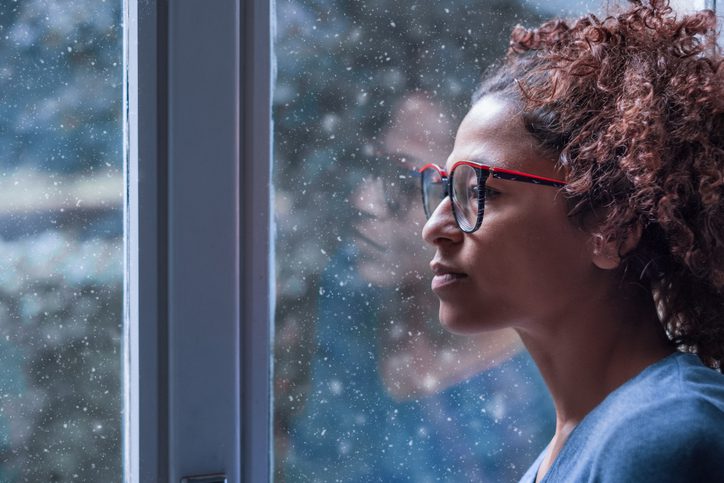November and December are beautiful seasons in their own way, even as the leaves die and fall, the grass grows crunchy with cold, and frost patterns itself on windows at night. There’s much joy to be had if you like cold weather and warm comfort foods. But as the daylight hours grow shorter, fall and winter bring with them the possibility for new or intensified mental health disorders. Particularly, depression can set in or worsen.
Seasonal affective disorder (SAD) is a type of depression that can begin when the seasons transition. SAD is most common in the transition from fall to winter, but it can also occur in the spring. Researchers believe fall-winter SAD is triggered by lack of sunlight, which can lead to chemical changes in the brain, including lower levels of serotonin and higher levels of melatonin.
What Does Sunlight Have to Do with Mental Health?
Serotonin is the neurotransmitter (a chemical that transfers messages between the body and the brain) that strongly influences mood and happiness, as well as body temperature, sleep, and hunger, among other things. Low levels of serotonin can lead to depression, anxiety, and other mental health disorders.
The sun is partly responsible for serotonin levels: a lack of sunlight, such that occurs in fall and winter months, can lower serotonin levels. Vitamin D is also part of this equation. Sunlight on our skin helps produce vitamin D, which can boost serotonin levels. This is why many doctors recommend taking vitamin D supplements, especially in months of low sunlight exposure.
In addition to affecting serotonin, sunlight also affects melatonin, a hormone that affects sleep and mood. The body may produce more melatonin in darker months, leading to an increased desire to sleep as well as a tendency toward depression.
How Do I Know if I Have Seasonal Affective Disorder?
SAD symptoms are similar to those of depression, and people who struggle with mental health disorders year-round are more likely to develop SAD. People with bipolar disorder may also be more sensitive to seasonal changes, which may increase symptoms of mania in the spring and symptoms of depression in the fall and winter.
Symptoms of SAD include:
- Persistent feelings of sadness, hopelessness, or guilt
- Loss of interest in activities you once enjoyed
- Low energy, sluggishness
- Wanting to sleep more than usual
- Cravings for carbohydrates, which can lead to overeating and weight gain
- Difficulty concentrating
- Suicidal thoughts
Some of these symptoms may be different in cases of spring SAD. Anxiety, restlessness, and irritability characterize spring SAD, as well as insomnia, poor appetite, and weight loss.
If you are feeling moodier than usual, having trouble getting motivated, and experiencing sleep and appetite changes, talk with your doctor or therapist. They can do a thorough assessment and set you up with a treatment plan.
How is Seasonal Affective Disorder Diagnosed and Treated?
According to the National Institute of Mental Health, a SAD diagnosis requires the following criteria:
- Having symptoms of depression that occur in specific seasons (winter or summer) for at least 2 consecutive years.
- The seasonal episodes of depression are more frequent than depressive episodes experienced at other times of the year.
SAD treatment is similar to that of depression treatment: antidepressants and therapy are primary treatments, with the potential addition of vitamin D supplements and light therapy. Light therapy entails buying a light box that simulates sunlight and sitting near it every morning for 30-40 minutes.
Can SAD be Treated with Self-Care?
If you have symptoms of SAD, talk with your doctor or therapist and follow their recommendations. In addition, self-care is also a wonderful tool to complement treatment. In the case of SAD, self-care interventions might include the following:
- A healthy diet, low in sugar and processed foods.
- Outdoor exercise. Yes, it’s cold, but if you’re wearing the proper gear, being outside in the winter sun is a good antidote to depression symptoms.
- A regular sleep schedule, getting up and going to bed at about the same time each day.
- Social connections. Spend time with friends and family you enjoy.
- A gratitude practice, taking some time each day to reflect on what or who you were thankful for that day.
Feeling Sad? Peak Behavioral Can Help
If the “winter blues” are taking a dark turn for the worse, don’t hesitate to reach out for help. We treat depression, anxiety, bipolar disorder, and many other mental health disorders. Our team in Santa Teresa, NM will offer a thorough assessment, diagnose any mental health issues at play, and offer an individualized treatment plan that meets your needs. We are here for you all winter long and throughout the year. “






